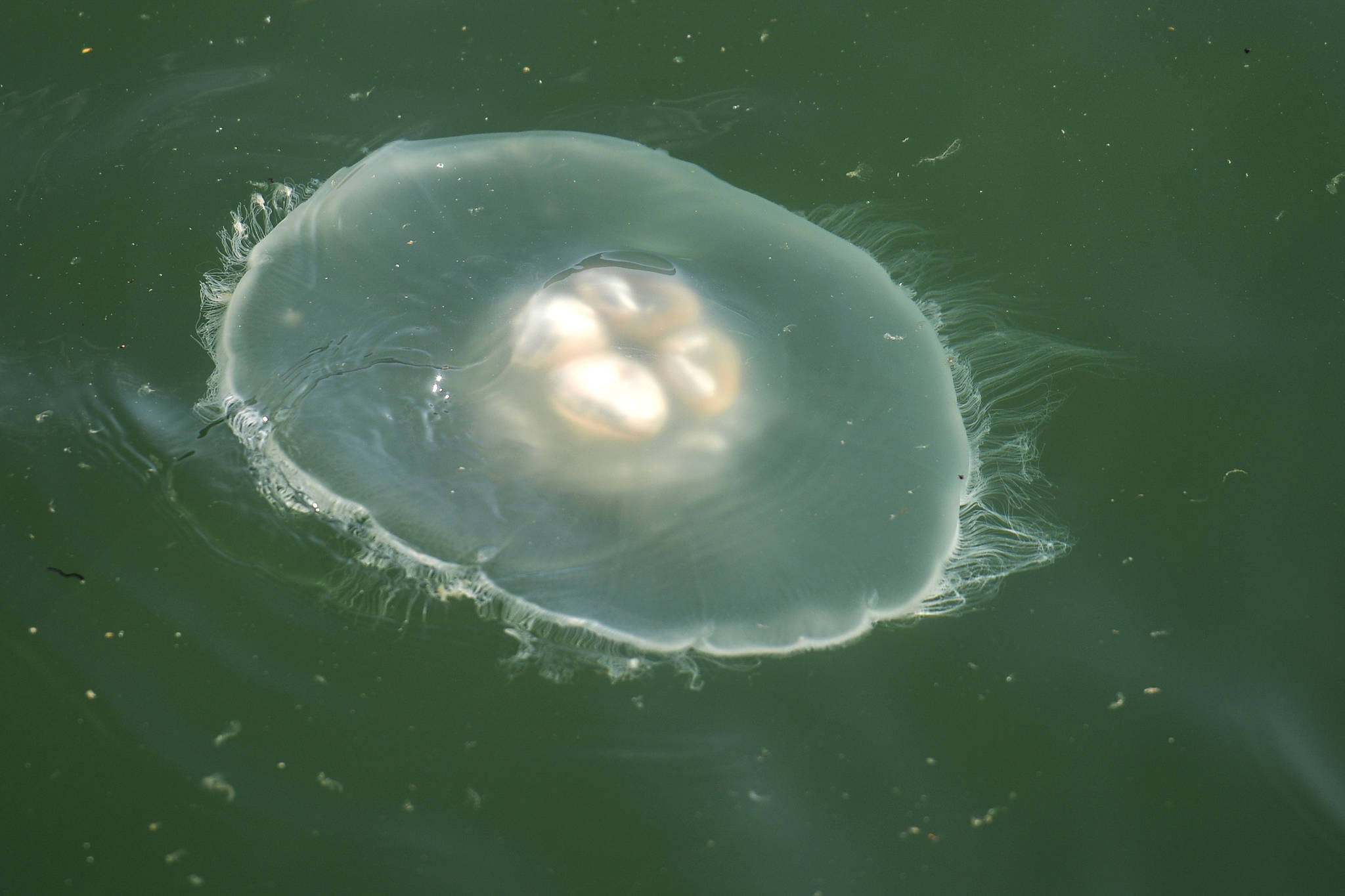An unusually warm ocean temperature has contributed to a larger-than-usual amount of Aurelia aurita, or moon jellyfish, floating around the waters of Juneau.
Plentiful food in the form of zooplankton, and warm waters are contributing to anecdotally increased numbers of moon jellyfish sightings, said Dr. Sherry Tamone, a professor of marine biology at the University of Alaska Southeast.
Jellyfish spawn freely into the water column, releasing sperm and eggs that fertilize on their own, independent of the parent jellyfish. Spawning in early spring, they’ve reached maturity by now, hence their distinct visibility in the channels and harbors.
“They have two different stages in their life,” Tamone said. “One is attached to the dock or a rock, and one is free floating like a jellyfish.”
All jellyfish have nematocysts that allow them to sting prey and defend themselves, although the sting of the moon jellyfish is considered less painful than the sting of some others, such as the Man o’ War or sea nettles native to the Atlantic Ocean. The moon jellyfish doesn’t have stingers on top of the bell, or head, of the jellyfish.
“If you see them on the beach, just leave them,” Tamone said. “Don’t try and pick them up, or you may irritate your hand.”
Jellyfish are difficult to keep alive in an aquarium environment, Tamone said, as they rely on ocean currents for oxygen and nutrients. Jellyfish typically rely on animal larvae and zooplankton for sustenance.
“They use their stinging cells to eat a lot of larvae in the water column,” Tamone said.
There are concerns that too many jellyfish in the water would eat too many zooplankton, throwing off the ecosystem, but Tamone says that isn’t the case here.
Tamone said lion’s mane jellyfish are also common in northern waters, characterized by their colorful tentacles trailing from the head of the jellyfish.
Tamone recommends watching the jellyfish from a pier, for the best views.
• Contact reporter Michael S. Lockett at 523-2271 or mlockett@juneauempire.com.

